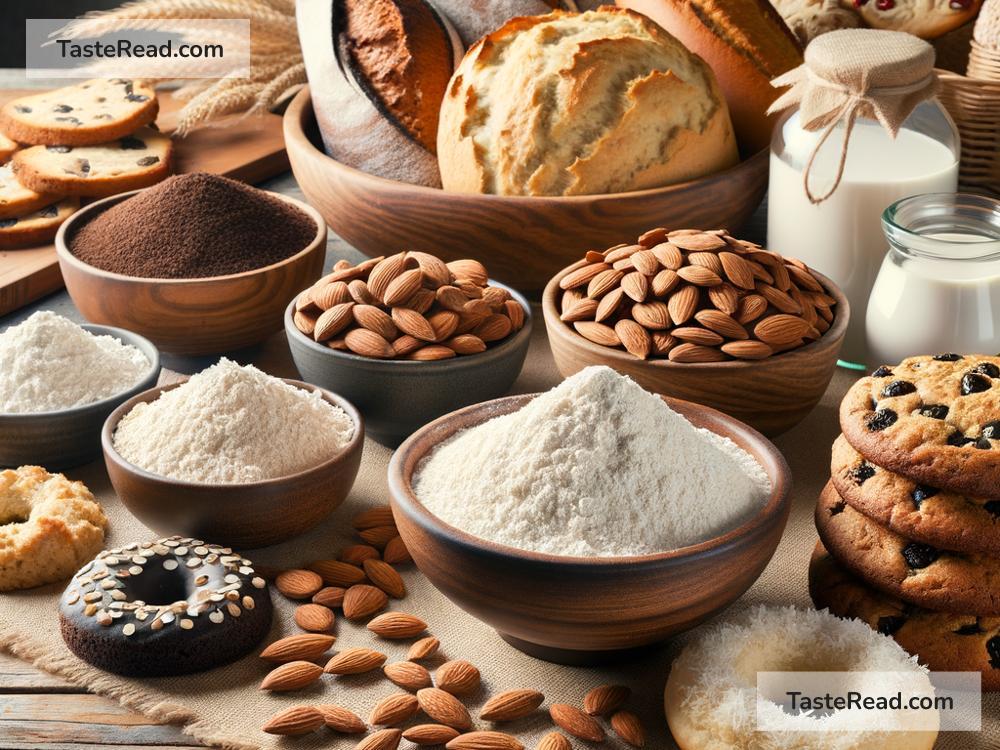When you think of baking, the first ingredient that likely comes to mind is wheat flour. It’s been the backbone of everything from bread to cakes for centuries. However, as more people explore dietary restrictions and healthier alternatives, the spotlight has shifted to a range of alternative flours. These flours not only accommodate dietary restrictions but also add unique flavors and nutritional profiles to baked goods. Mastering the science of baking with these alternative flours can open up a world of delicious and healthier possibilities. Let’s dive into how to get started and some tips to keep in mind.
Understanding Alternative Flours
Alternative flours come from various grains, nuts, and even fruits and vegetables. Some popular options include almond flour, coconut flour, rice flour, and oat flour. Each type has its distinctive taste, texture, and nutritional benefits. For instance, almond flour is rich in protein and healthy fats, while coconut flour is high in fiber. The diversity among alternative flours means there’s a bit of a learning curve when it comes to using them in your baking.
Why Substitute Flour?
People turn to alternative flours for various reasons, including gluten intolerances, celiac disease, low-carb diets, or simply to add more nutrition to their baked goods. Unlike traditional wheat flour, most alternative flours are gluten-free, making them perfect for those who cannot consume gluten. They also offer different flavors and textures, allowing bakers to experiment creatively.
Getting Started with Alternative Flours
If you’re new to using alternative flours, here are some steps and considerations to help you dive in:
-
Research and Experiment: Since each flour behaves differently, it’s important to do some homework. Understand the properties of the flour you’re using—its protein content, fat content, how it absorbs liquid, etc.
-
Substitution Ratios: You can’t always substitute alternative flour on a 1:1 basis with wheat flour. Some, like coconut flour, are highly absorbent and require more liquid to be added to the recipe. Start with recipes specifically designed for your alternative flour of choice until you get a feel for how it behaves.
-
Mix and Match: Sometimes, the best texture and flavor come from a blend of flours. Mixing a highly absorbent flour with a less absorbent one can help achieve a balance that mimics traditional wheat flour more closely.
-
Adjustments: Be prepared to adjust other ingredients in your recipe, especially wet ingredients, leavening agents (like baking powder or yeast), and binders (like eggs or xanthan gum) to counteract the differences in texture and absorption.
Baking Tips for Success
Mastering alternative flours in baking doesn’t have to be daunting. Keep these tips in mind, and you’ll be well on your way to delicious, healthier baked goods:
-
Be Patient: The textures and flavors might differ from what you’re used to with wheat flour, so give yourself time to adjust and don’t be disheartened by initial failures.
-
Moisture Matters: Alternative flours often require adjustments in moisture. Start cautiously with liquids, as you can always add more if the batter or dough seems too dry.
-
Keep It Fresh: Many alternative flours, especially those made from nuts, can go rancid quickly. Store them in airtight containers, and consider keeping them in the fridge or freezer to extend their shelf life.
-
Texture Tweaks: Expect variations in the texture of your baked goods. Some flours make for denser products, while others might create a crumbly texture. Experimentation is key to finding the right balances.
Embracing the Learning Curve
Transitioning to alternative flours in baking is both an art and a science. It allows you to explore a world of flavors, textures, and nutritional benefits that traditional wheat flour can’t offer. The key to success lies in understanding the unique properties of each alternative flour and embracing the trial-and-error process. As you become more familiar with these flours, you’ll gain the confidence to tweak and adapt recipes, making them healthier and tailored to your dietary needs.
Whether you’re following a gluten-free diet, aiming to reduce carbs, or simply looking to inject some nutritional variety into your baked goods, alternative flours have something for everyone. With a bit of practice and patience, mastering the science of baking with these flours can unlock a whole new realm of delicious, health-conscious treats. Happy baking!


